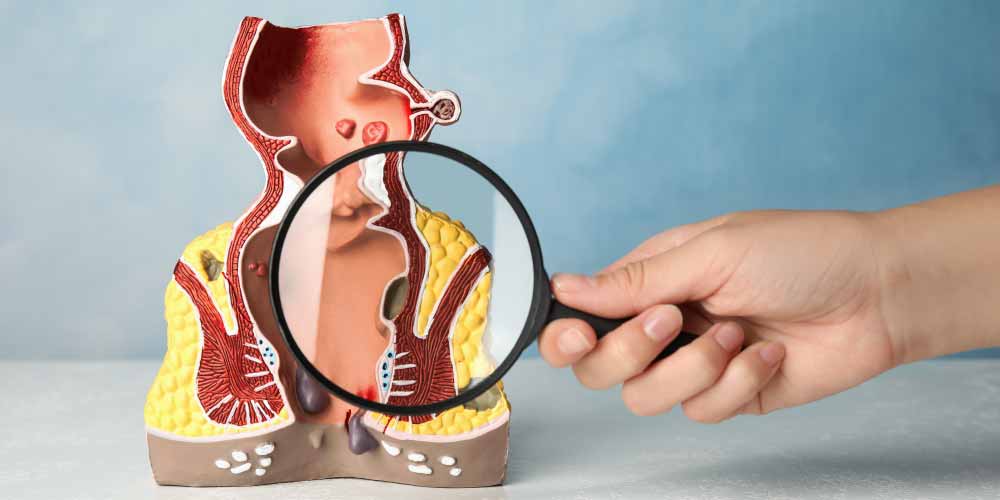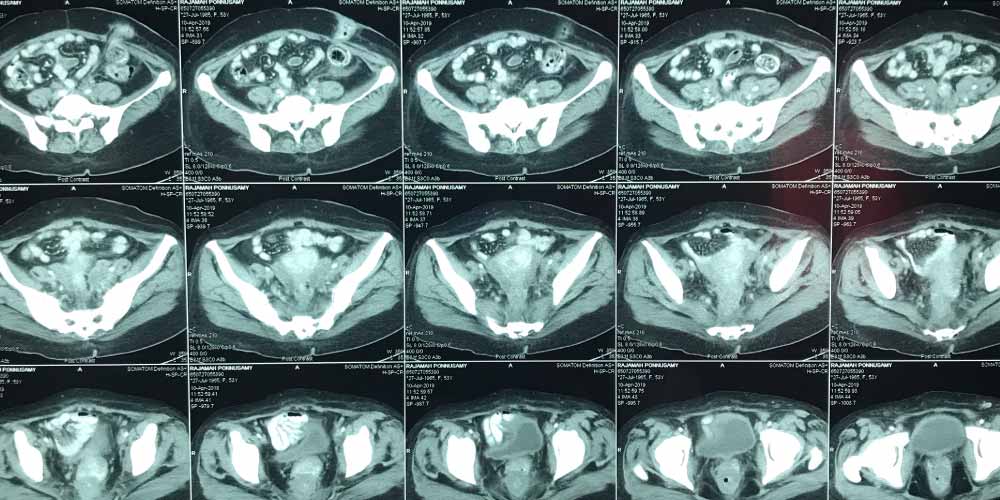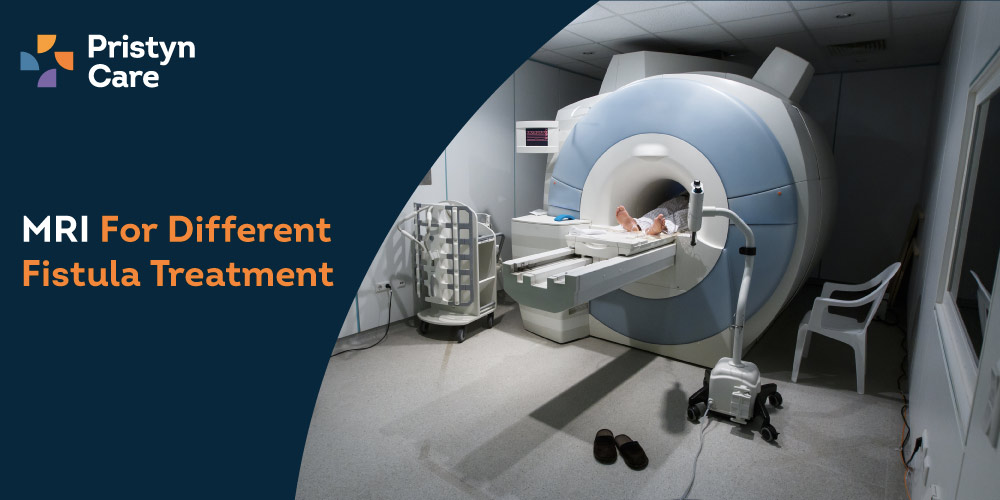![]() Views: 1,003
Views: 1,003
MRI For Different Anal Fistula Treatment
Dedicated Support at Every Step!
Our Doctors are available 24 hours a day, 7 days a week to help you!
Magnetic resonance imaging (MRI) is an imaging technique that utilizes computer-generated radio waves and magnetic fields to create explicit images of the tissues and organs in the body. It is an imaging modality for the preoperative evaluation of patients with anal fistula. An anal fistula is a small abnormal tunnel connecting an abscess, an infected cavity in the anus, to an opening on the skin around the anus.
MRI helps display anal fistula extension and predict prognosis, which in turn helps make treatment decisions and monitor treatment. MRI for fistula provides the image of sphincter muscles, the anal canal, and the surrounding tissues, and doctors store the MRI scan image on electronic devices. Imaging through MRI defines all hidden tracts and states the connection between the anal fistula and the anal sphincter. The entire procedure takes around 40-60 minutes. However, it is essential to know about the types of anal fistulas before we can know about MRI classification and the exact role of MRI in outlining the hidden fistula tracts.
Table of Contents
What Are The Types Of Anal Fistula?

There are 4 types of anal fistulas.
- Intersphincteric: In an Intersphincteric anal fistula, the fistula tract is between the internal and external sphincter muscles. Here, the opening of the anal fistula is extremely close to the anal opening.
- Trans-sphincteric: Here, the anal fistula tract goes through the internal and external sphincters and opens a little away from the anal opening.
- Supra-sphincteric: The fistula tract forms in the spaces between the sphincter muscles, turns upwards toward the puborectal muscle, crosses it, and then reaches downwards and opens 1-2 inches outside the anus.
- Extrasphincteric: In an Extrasphincteric anal fistula, the tract starts from the rectum and goes downwards to the perianal skin. Crohn’s disease or diverticulitis commonly leads to these kinds of fistulas.
No Cost EMI, Hassle-free Insurance Approval
MRI Classification
In the medical scenario, the following MRI grading classification is used to know what kind of anal fistula tract is present in the patient, its appearance, the gravity of the medical condition, and how to monitor its treatment in the future.
- 0- normal appearance
- 1- simple linear intersphincteric anal fistula
- 2- intersphincteric fistula with intersphincteric abscess or the presence of any secondary fistulous tract.
- 3- trans-sphincteric fistula
- 4- trans-sphincteric fistula with abscess or secondary track
- 5- This MRI grading correlates with the outcome. Grades 1 and 2 are linked with favorable outcomes (i.e., no recurrences of anal fistula), while grades 3–5 are linked with less favorable outcomes (resulting in recurrences requiring reoperations).
What Happens In The MRI Procedure?
- On the day of the procedure, the patient receives all the necessary instructions before the MRI.
- The doctor examines the blood pressure, heart rate, and oxygen level and numbs the affected area.
- The affected area is cleaned.
- Once the area is numb, the doctor places a tiny catheter in the anal fistula. The catheter is similar to the needle used at the time of dialysis. The doctor then puts a contrast dye into the catheter, so they can see what is happening to the fistula on x-rays.
- The patient goes into the MRI machine with magnetic scanners that send images of the fistula on the computer screen.
Why Is An MRI Necessary?
An MRI is the best option for the diagnosis of an anal fistula. Here is the purpose of an MRI scan:
- To diagnose anal fistula: MRI is used to diagnose the anal fistula.
- Rule out IBD (Inflammatory Bowel Disease): An anal fistula is the most common type of fistula among patients with Crohn’s disease. MRI is used to diagnose Crohn’s disease. Crohn’s disease is a type of inflammatory bowel disease that causes swelling of the tissues in the digestive tract, resulting in abdominal pain, acute diarrhea, fatigue, malnutrition, and weight loss.
- Test for obstetric fistula: This medical condition happens when a hole forms in the birth canal after childbirth.
- To diagnose different types of anal fistula: MRI is used to detect the type of anal fistula – one end opening, both end opening and external opening fistula.
- To plan for surgery for anal fistula: Before surgery for an anal fistula, an MRI scan is preferred, which helps in knowing the type of fistula and the severity of the condition. Surgery using a laser is the most successful option for treating fistula and avoiding recurrence or incontinence.

Role of MRI
The role of MRI is, therefore, to outline all hidden tracts of the anal fistula and to know the relationship of the fistula to the anal sphincter. In addition, any damage to the anal sphincter can result in anal incontinence; hence it is necessary to know the relation between the anal fistula tract and the anal sphincter.
There are many other indications for imaging in the anal fistula. General physicians need to know if there are any anal fistulas present at all in the sphincter muscles, anal canal, and surrounding tissues. MRI helps to correctly demonstrate anal fistula extension, predict prognosis, and monitor therapy. It has also been shown to minimize recurrent disease and reoperation. In patients with Crohn’s disease, the recurrence could be due to incomplete medical treatment. However, MRI can predict prognosis even in patients with Crohn’s disease.
Benefits Of MRI
The benefits of an MRI are:
- Accuracy in the assessment of anal fistula
- Non-invasive
- Helps in precise planning of the laser surgery of anal fistula
- Provides sufficient information to avoid any invasive medical procedures
- No radiation exposure
Conclusion
MRI is one of the best ways to display anal fistula extension and predict prognosis. It provides accuracy in assessing anal fistula and helps prepare for surgery. MRI has become the ruling method for inspecting fistulas and delivering information to proctologists. If you are experiencing any symptoms of anal fistula, like skin irritation, passing pus or blood when you poop, etc., consult a proctologist and get the tests required to discover the proper anal fistula treatment.
At Pristyn Care, you can get anal fistula diagnosis and treatment from specialized doctors with facilities like advanced laser treatments, care coordinators, and post-surgery care. Our medical specialists can offer various treatment options depending on the fistula’s location, complexity, and cause. The goals are to repair the anal fistula completely to prevent recurrence and to save the sphincter muscles.














